Mold - mushrooms that do not taste!

Whether in industrial buildings or at home, mold becomes an unappetizing, health-threatening and expensive matter. Especially in food production or food storage, but also in the pharmaceutical industry, mold is an absolute "no-go" and can cause astronomical costs.
To avoid mold, understanding the physics of how it forms is immensely helpful. Mold is fungus and fungus likes it moist.
Basics
The warmer air is, the more water vapor it can absorb. If the relative humidity is 100%, it is saturated and has no room for further water vapor. When saturated air cools on cold surfaces, the water separates as dew or mist. This is exactly what molds like. Without water, they don't feel comfortable.
The civil engineer and building physicist then speaks of the wall falling below the dew point.
Colloquially, however, this is stupid because, at least among the Swabians, "tauen" is used in the sense of "melting" (I thaw my frozen schnitzel), whereas when air falls below the dew point, it is a matter of "condensing" the water vapor, i.e. something gaseous becomes liquid. Probably this is the reason why civil engineers and mechanical engineers sometimes get along so badly. But back to the topic!
Thus, wetlands for fungi occur where warm air with high humidity meets cold walls or other bodies.
Important findings can already be derived from this:
- Open windows and ventilate only long enough for the air in a room to exchange, but not long enough for the walls and objects in the room to cool down significantly.
- Insulation on the inside wall of a room should be airtight, otherwise moist room air cools behind or in the insulation and moisture condenses.
- Since insulation from the inside always creates critical zones, exterior insulation (see figure 1) is in principle better than interior insulation (see figure 2). Since with exterior insulation the masonry also has to be heated up, the room temperature is more uniform and does not cool down as quickly.
- Cold bridges (uninsulated or poorly insulated areas) are particularly susceptible to mold.
- The coldest places on the wall are the most vulnerable to mold growth (e.g. corners, transitions, cold bridges).
It's all a question of temperature
Basically, mold depends on the temperature of the walls and the air in the room. If the wall temperature is below the dew point temperature of the room air, this is bad and the mold neighs, or grows and thrives.
For a flat, stationary wall, the wall temperature can also be calculated analytically without any problems and compared with the dew point temperature. However, as soon as time and somewhat more complex geometry are added, the whole thing becomes somewhat more difficult.
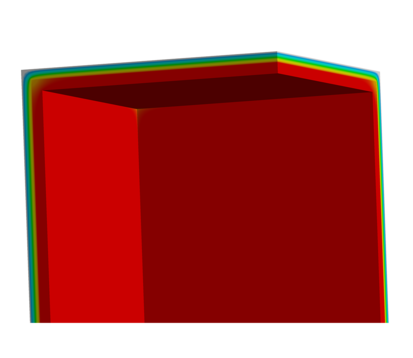
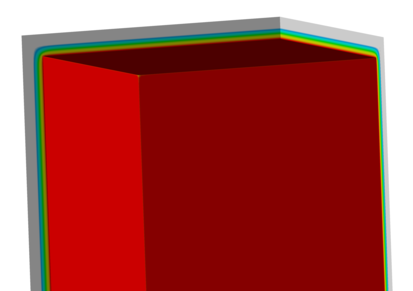
Already open the window and ventilate, but for how long? Analytically very difficult, but a question that we at Merkle CAE Solutions can answer via 3D simulations (CFD flow simulation) even for buildings of any complexity such as a living room, a hotel complex, an industrial building or a concert hall by means of a transient CFD simulation. In an industrial hall, it is then just an open gate instead of a window, because every hall also needs an interface to the outside world.
Identify mold-prone areas
The flow of air and the temperature of the solids (walls, floor, ceiling) can thus be determined in a computational model in a steady-state or transient manner (as a function of time). From this, the areas susceptible to mold can be clearly identified (see Figure 3), optimized by suitable measures and, if possible, avoided altogether. For the simulation, you do not have to build the hall with Merkle CAE Solutions to see that there are problems.
But what about condensation when we open the door to the packaging area at < 0°C in a cold store at -24°C?
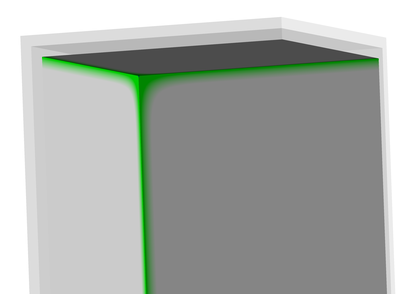
Condensation during mixing of air masses
Let's look at what can happen when two differently humid air masses with different temperatures mix.
A view out of the window to the cooling towers of Gundremmingen has shown (at least in the past) that, depending on the weather conditions, the fog plumes were differently pronounced. Here, a saturated air stream at high temperatures intermingled with the colder ambient air (see Figures 4 and 5).
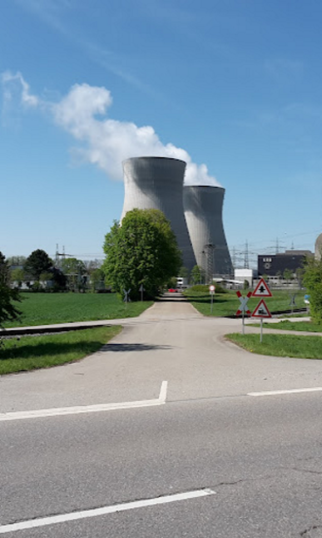
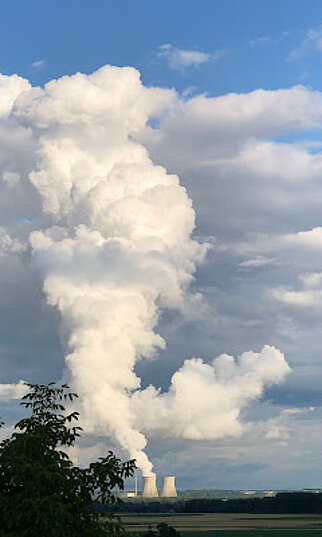
From thermodynamics I remember the Mollier-hx diagram for humid air. If the straight line connecting two air streams passes through the fog region (curve below the saturation line), fog can form. Otherwise it would not be called a fog region.
If these water droplets settle on the walls, mold can neigh here, too, or grow and thrive.
At Merkle CAE Solutions, we can also map this mixing of two different air streams or air masses with consideration of humidity via CFD simulations for scenarios of any complexity. And this as a function of the location, not just across-the-board as in the hx diagram.
As you can see, there are no physical limits to the simulation here.
Mold is a topic that should not be underestimated and is at the top of the wish list of possible simulations for some of our customers. Even before the topic of energy efficiency!
Challenge us and let's tackle the issue together.
Yours Stefan Merkle

PS: I made the Swabian term "des isch a no go" socially acceptable some time ago in the context of my work as a simulative development worker in Hamburg.
PPS: Maik thinks that my use of the horse head in the cover picture allows depth psychological statements about me. Is that so... ?!?
PPPS: Since the topic of mold is very important to our customers, I will write another blog about this soon. Be curious!